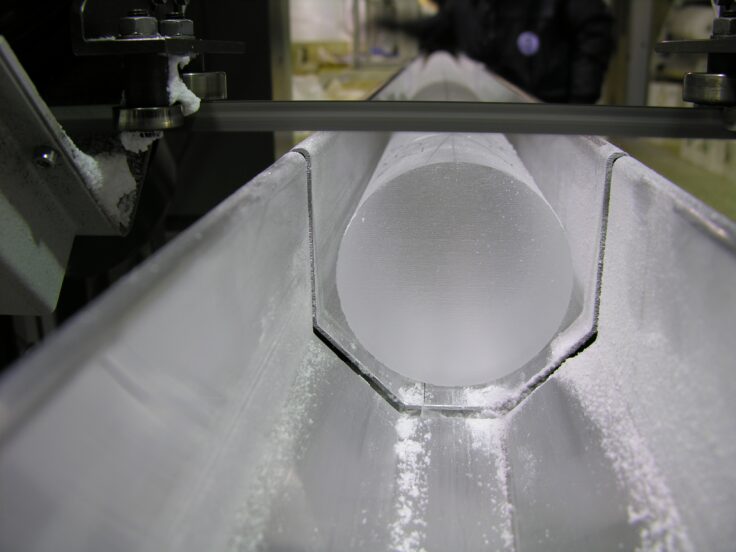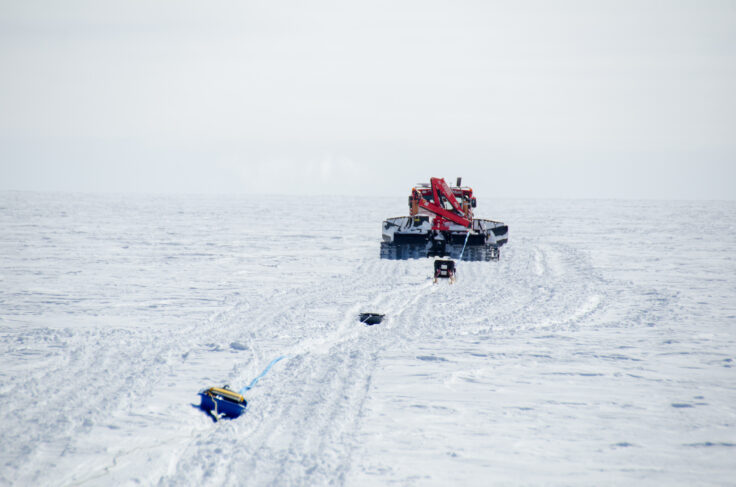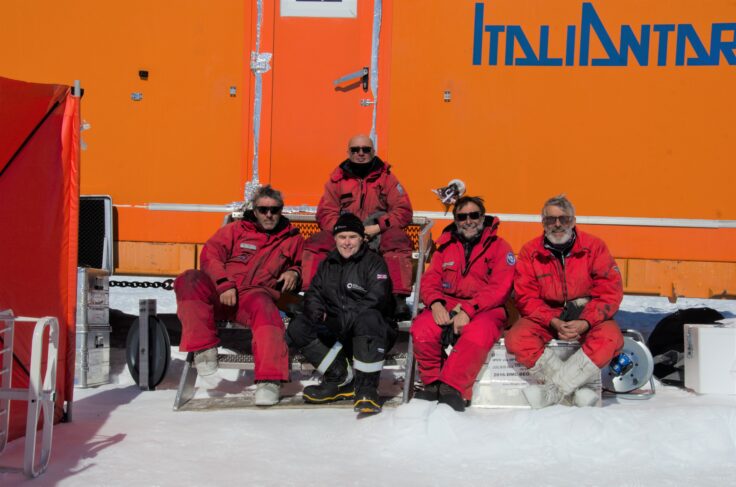New mission for 1.5 million year climate record
This week a team of European researchers announces its plans for an ambitious mission to find the oldest ice on Earth (9 April 2019). Antarctica’s ice has the potential to help scientists understand the Earth’s past climate shifts and make better projections about future climate change.
Speaking this week at a European Geosciences Union Conference in Vienna, the team explains how a 2.7km ice core drilled from ‘Little Dome C’ on East Antarctica will reveal the history of the Earth’s climate going back 1.5 million years.

The mission – known as Beyond EPICA – involves scientists from 10 countries. Little Dome C (75.10’S, 123.35’E) is one of the most hostile environments on the planet, and average annual temperatures are below -54 degrees Celsius. The French-Italian research station Dome Concordia will provide operational support for ‘deep field parties’.
The team surveyed several sites in East Antarctica over three field seasons between 2015 and 2018. Sites were near Little Dome C, just 40 km from the previous EPICA drill site (which revealed a 800,000 year climate record) located at the French-Italian research station Dome Concordia, and one near Dome F, some 2000 km away. Teams spent months in freezing temperatures towing a radar behind a snow tractor in a grid formation at each site. In total over three seasons they covered around 2500km at each site – 5000 km in total.

The team also drilled a borehole to determine the suitability of the site and the ice temperature at the bedrock beneath the ice.
Dr Robert Mulvaney, ice core scientist from British Antarctic Survey (BAS), the UK partner in Beyond EPICA was involved in the site selection over the three field seasons. He explains:
“In the early 2000s we retrieved an Antarctic ice core that gave us a climate record going back 800,000 years. We learnt a huge amount about the critical periods between the shift from warm periods and ice ages. Now we want to go back even further to beyond a million years ago, when the planet’s climate cycle between cold glacial conditions and warmer interludes changed from being dominated by a 41,000-year pattern to a 100,000 year cycle.”
Understanding what controlled this shift in the Earth’s glacial cycles, and whether increasing carbon dioxide levels played a part, along with factors such as changes in the Earth’s rotational tilt, will help scientists to understand better how ice sheets will behave as the planet warms.
Prof Olaf Eisen, project coordinator and glaciologist at the Alfred Wegener Institute (AWI), says:
“We know that our climate is changing. What we don’t yet fully understand is how the future climate will respond to increasing greenhouse gases in our atmosphere beyond 2100 and whether there will be tipping points in the system we are not aware of yet. It will be hugely helpful if we can understand what happens when the duration of natural climate cycles shifts. We can only get this information from the Antarctic ice sheet. To be able to embark on this mission is tremendously exciting.”

Dr Mulvaney continues:
“To find the best drill site, we look for a number of different things in the ice. Thickness is the first indicator. Different rates and volumes of snow accumulation, ice flow behaviour and the temperature at bedrock level help us determine whether old ice does indeed remain near the base of the ice sheet. This Little Dome C site is most likely to be the best location to find the right kind of ice that will tell us what we need to know.”
The multi-year project will extract an ice core reaching from the surface to bedrock, approximately 2.7km below. Analysis of the core will take place in laboratories across Europe.
Further information:
The Beyond EPICA consortium and its international partners unite a globally unique concentration of scientific expertise and infrastructure for ice-core investigations. It delivers the technical, scientific and financial basis for a comprehensive plan to retrieve an ice core up to 1.5 million years old. This is an important contribution for the future exploration of Antarctica and promises unique insights about climate and the global carbon fluxes. This knowledge will improve future prognoses of climate development with solid quantitative data and will allow establishing more targeted strategies, to cope with the societal challenges of global change.
Beyond EPICA is made up of 10 countries. Consortium members include:
- Alfred Wegener Institute, Helmholtz Centre for Polar and Marine Research (AWI, Germany), Coordination
- Institut Polaire Français Paul Émile Victor (IPEV, France)
- Agenzia nazionale per le nuove tecnologie, l’energia e lo sviluppo economico sostenibile (ENEA, Italy
- Centre National de la Recherche Scientifique (CNRS, France)
- British Antarctic Survey (NERC-BAS, Great Britain)
- Universiteit Utrecht – Institute for Marine and Atmospheric Research (UU-IMAU, Netherlands)
- Norwegian Polar Institute (NPI, Norway)
- Stockholms Universitet (SU, Sweden)
- Universität Bern (UBERN, Switzerland)
- Università di Bologna (UNIBO, Italy)
- University of Cambridge (UCAM, Great Britain)
- Kobenhavns Universitet (UCPH, Denmark)
- Université Libre de Bruxelles (ULB, Belgium)
- Lunds Universitet (ULUND, Sweden)